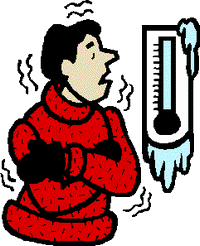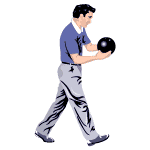How to Use Your Warm Up to Your Advantage
 It would seem such a simple task during your warm up session.
It would seem such a simple task during your warm up session.
You are trying to get your body warmed up for your game. You know how the first ball or two thrown will be to physically condition your body for bowling. But, most bowlers miss the opportunity to gain helpful insights as they warm up. Instead of just warming up, you may want to consider using this time to enable yourself more productively.
Consider this as your opportunity to learn how the lanes are reacting. Learn how to use each ball thrown to your advantage. Now you can warm up physically, and gain insights how you will enter your competition, both at the same time.
Because you are committed to identify how to enhance your bowling, you should take advantage of an early set of ideas how to warm up as you prepare to bowl, and how to glean tips that help zero in on reading the lanes even before you begin bowling your session.
Here are some items you may want to consider.
First Practice Ball
 Let’s take that first ball delivery, and gain two tips with one ball. Useyour favorite aggressive ball you normally select for your strike shot.
Let’s take that first ball delivery, and gain two tips with one ball. Useyour favorite aggressive ball you normally select for your strike shot.
The first warm up ball is usually the weakest. Your roll is simple and relatively slow. After all, the primary purpose of a warm up ball is to “warm up” the body. You will add one additional task: line up to bowl the opposite corner pin. You don’t actually care if you actually hit it. In fact, you don’t care if the corner pin is there or not. You are not bowling for score, but for information you will use later.
Watch the Ball
By carefully watching how the ball skids, hooks and rolls, you gain insight as to how much lane conditioner is in the center area of the lane. If your ball skids more or less than you would normally expect, and you make note of whether the lanes are normal, oily or dry.
Knowing your first ball delivery is not yet at full speed, you know whether you will have to adjust your alignment to compensate for the lane conditions. If the ball is hitting too high in the pocket, you should intuitively know you must either increase your ball speed, or adjust your stance 1/2 board to the outside. If the ball is hitting too low in the pocket, you must either decrease your ball speed, or adjust your stance 1/2 board inside. Of course, still another alternative for these results may be to increase or decrease the revolutions or tilt on your ball release. These judgments are best implemented during practice, but if you don’t have that opportunity, you should make a mental note to yourself where to begin.
Where is the Exit Point and Breakpoint
In addition to learning how much oil is in the center of the lane, you can identify how far down the lane the ball transitions from skid to hook (the Exit Point) and from hook to roll (the Breakpoint). It is important to know these reference points for targeting and approach style. Gain knowledge of the length of the oil pattern, and you’ll be rewarded as you implement your ball delivery.
Second Practice Ball
Having gained your first two tips on the lane conditions, your second ball delivery is very similar to the first. Again, you will use your favorite ball you normally use, and line up once again at the ball-side corner pin. The only difference is, you now know where the ball is going to turn, and you know what ball reaction to expect. Again, as during your first practice ball, you don’t care whether the pin is there or not. Your primary objective is to gain information you can use during your bowling session.
Armed with this information, you should deliver your ball to hit the corner pin. The second practice ball is meant primarily to gain insight as to bowling the ball-side corner pin accurately.
Whether you hit or miss making your opposite corner pin shot, you should make a mental note of any adjustment you may want to consider during your bowling session.
Third Practice Shot
You now know the how the lanes are conditioned, and you have adjusted for the opposite side corner pin. For your third practice shot, your ball delivery will utilize the information gained during the first two practice shots. This shot tells whether your original judgments need a final adjustment prior to your bowling session.
If you observe the ball skid too far and fall off into the channel, make another mental note for your ball side corner pin AND your strike shot as well.
A ball-side adjustment, if necessary, can align both your corner and put you in the pocket for the strike you are planning for.
Fourth Practice Ball
If you are fortunate enough to get four or more practice balls, by this time, you should be warmed up and ready for bowling. It is time to zero in on your strike strategy.
By now you have a pretty good idea of the lane conditions, and accuracy adjustments noted earlier. Any future practice balls should focus on relaxing, ball selection adjustments for matching lane conditions, and speed adjustments that may enhance your game strategy.
Putting it together
Planning how to use your warm up practice is a wise move. You have physically conditioned yourself, and gathered mental notes that enhance your comfort and bowling. This advantage may prove to be the difference in how early during your game you are able to adjust effectively.
Making early and effective decisions are key to scoring well. The more information gathered early, the more your bowling skills can be enjoyed.
Use All the Tools Available
It is a reasonable expectation to focus on your warm up practice shots. The tip most often missed is to watch others. Each delivery provides valuable information you can put into your decision making.
Most bowlers simply throw strikes as their “practice shot”. You can read the results of each shot just as you would if it were your own. In essence, these bowlers provide you with another visual picture of the lane conditions. Now, relax, don’t force the ball, and wait for the quiet eye as you implement your approach and release. And, silently thank the other bowlers who are helping you find your bowling.
A Final Piece to the Puzzle
Don’t discount the information gained by careful observation of other bowlers … the competitors who can become the key to how your game is structured.

Learning while warming up is the best teacher
Warm the muscles, Learn the lane, Learn from others
